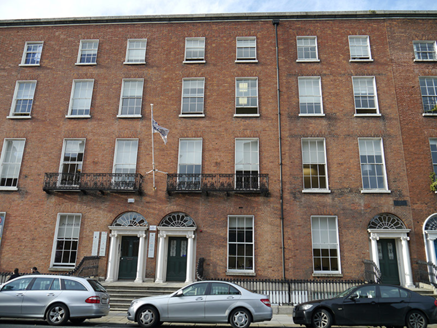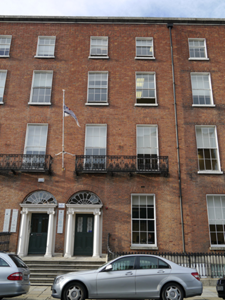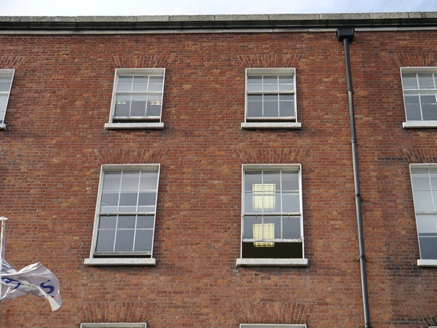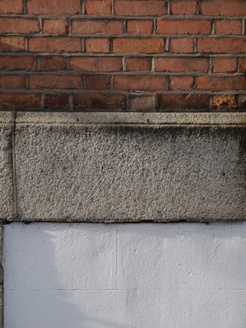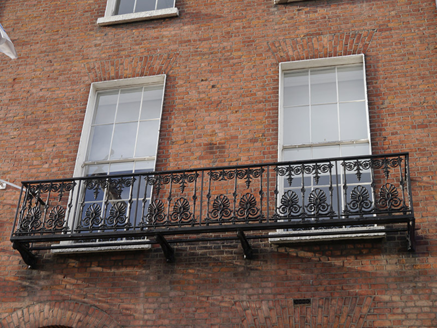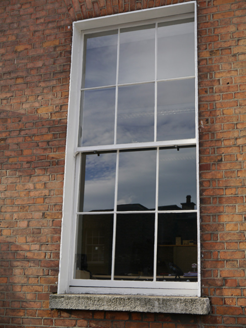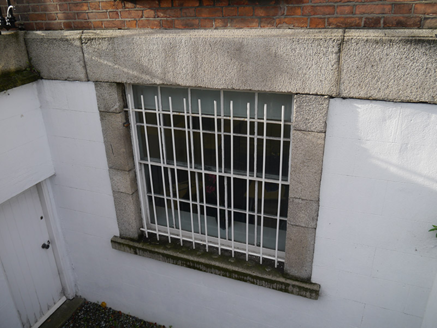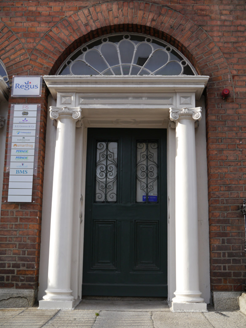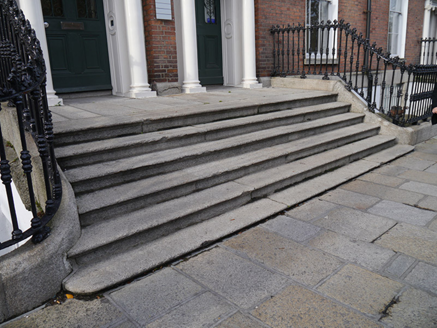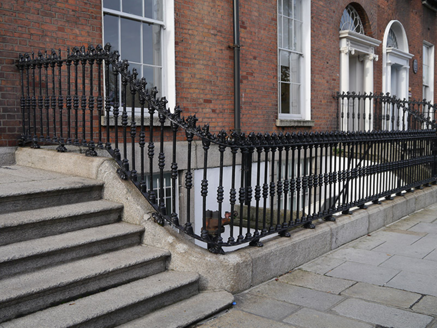Survey Data
Reg No
50930281
Rating
Regional
Categories of Special Interest
Architectural, Artistic
Original Use
House
In Use As
Office
Date
1820 - 1840
Coordinates
316370, 233061
Date Recorded
11/11/2015
Date Updated
--/--/--
Description
Terraced two-bay four-storey over basement former townhouse, built c. 1830, with bowed bay and multi-storey flat-roofed extension to rear (west). Now in use offices. Replacement mansard-style roof, concealed by parapet with moulded granite cornice and coping. Parapet gutters with uPVC downpipe to north side. Red brick walling laid in Flemish bond over ruled-and-lined rendered walling to basement beneath granite stringcourse. Square-headed window openings with brick voussoirs, patent reveals and granite sills; granite surrounds to basement opening with steel grille affixed to reveals. Largely six-over-six sliding timber sash windows with cavetto horns, three-over-six to third floor with convex horns and possibly original ten-over-ten to basement with wired glass inserts. Decorative continuous cast-iron balconette to first floor openings. Round-headed door opening with brick voussoirs and recessed surround containing prostyle portico with nail-head panelled frieze and moulded cornice carried on Scamozzian-Ionic columns over plinth stops, with petal fanlight and replacement timber and glass panelled door with decorative iron work fronting upper glazed panels. Shared granite entrance platform approached by six bull-nosed granite steps, flanked to north by curved iron railings with decorative cast-iron finials and collars on granite plinth, enclosing basement area. Coal-hole cover to pavement. Recent brick boundary wall to Quinn’s Lane with vehicular opening.
Appraisal
Laid out c. 1820, Pembroke Street Upper is characterised by well-proportioned late-Georgian style brick terraces which display restrained detailing and classically-styled doorcases. No. 31 forms part of a cohesive terrace, comprising Nos. 27-32 (50930280-5), which although extended to the rear and modernised, it is well-retained and distinguished by Scamozzian-Ionic doorcases, petal fanlights and decorative ironwork. The terrace makes a positive contribution to the streetscape and to the historic Georgian core of south Dublin.
